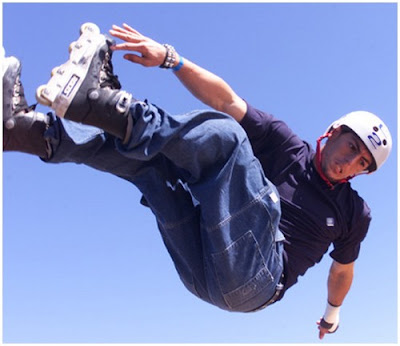When professional skateboarding is very fun and exciting, it's not necessarily without threats every objective involving small wheels. Unique safeguards need to be created any time using the actual skate board and something of the biggest things you can do is always to wear a proper couple of skate boarding shoes or boots.Sneakers for the rest of usSkate boarding appears to be a very simple activity because almost 1 simply needs a skateboard and a paved surface to carry out the item. With regard to safety, skateboarders are required to use head wear, knee safeguards, and knee pads. That is not basically sufficient for the reason that one has to defend a key portion of the entire body found in skate boarding - the toes. This is how skate boarding shoes or boots enter the picture.Generally, folks might imagine that any activity boots and shoes would complete pertaining to skate boarding. Nevertheless, this is not true. When standard trainers may look to your workplace, they may not be able to supply the suitable safeguard in addition to ability to move of which skateboarding shoes and boots offers. Which is not enough to only find the subsequent list of skate boarding boots and shoes the truth is from the rack. You have to be careful regarding buying brand new professional skateboarding footwear.When selecting skateboarding shoes you have to take a look at four significant things: the ability of the shoes to provide safety, this shoe laces, comfort, as well as grip.Safety Features ( blank ) Essentially the most critical role connected with professional skateboarding boots and shoes can be guarding this skate boarder. Getting defensive, these shoes simply have to possibly be tough and flexible ample to face up to the actual affrication connected with professional skateboarding. Very good skateboarding shoes and boots should have Ollie protection permitting a participant to perform those people back breaking steps. Also a very good two of skateboarding shoes and boots really should have terrific coverage associated with Ollie safeguard, if at all possible the a sizable majority of the bottom spot, or even the entire place altogether surely nothing much less.Shoelaces skate boarding shoes will need specific laces that won't quickly fall apart specifically when put through force. Usual shoe laces would certainly conveniently scam soon after just a couple of working hours involving skate boarding, particularly for superior skateboarders. As a result professional skateboarding boots and shoes needs to have laces made of tougher elements when compared with other kinds connected with shoes or boots. Furthermore, it is usually greater in case the professional skateboarding boots and shoes include shoelaces which have been fixed interior in order to avoid any kind of pet stumbling because of lose laces.Comfort and ease ( space ) each and every sort of sneakers, professional skateboarding boots and shoes really should be relaxed for the consumer, in any other case, will probably be challenging be wearing these individuals for long time periods. Unpleasant boots and shoes could potentially cause blisters or sores while used for the duration of skateboarding for upwards of 2 hours. Uncomfortable shoes can also cause it to difficult, in any other case impossible to do a number of steps in the course of skate boarding.Grip : continue, although not the last, skateboarding shoes or boots should be able to possess strong traction on top in the skate board. Footwear that do not adequate grasping electrical power may cause your riders to slip away from the table inadvertently. The particular soles must be created from materials along with very good gripping potential. Experts advocate skate boarding shoes along with soles which can be created from bubble gum.Skate boarding shoes are crucial throughout professional skateboarding. They give safety, protection, ease and comfort and grip in the complicated voyages. You have to shell out considerably particular attention when buying skateboarding boots and shoes to acquire the correct one.


